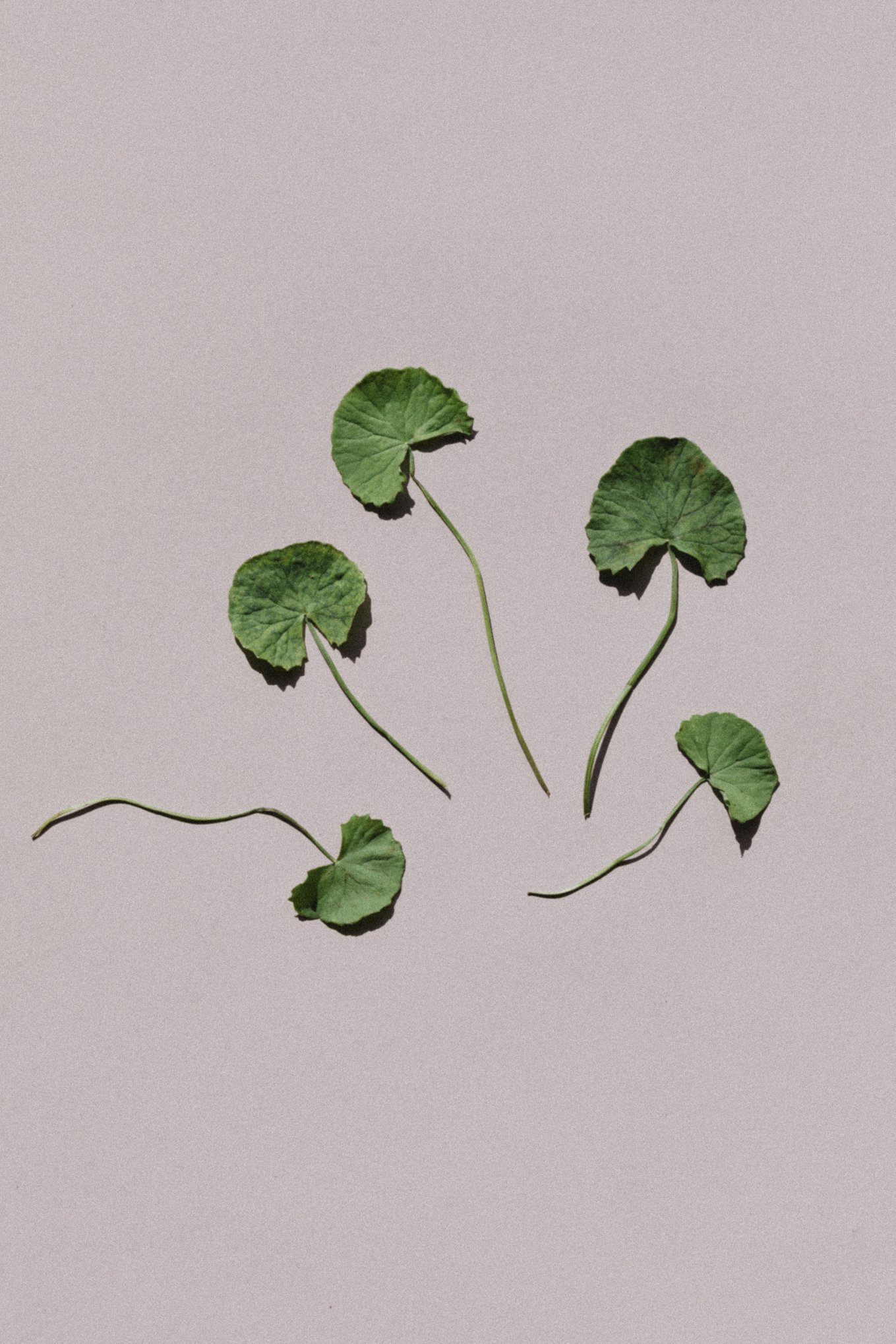GOTU KOLA
Gotu kola (Centella asiatica) is a common “weed” with a long tradition of use in both Ayurvedic and traditional Chinese medicine. The mind-strengthening properties of this plant are well documented, and as a skincare ally it works wonders for preventing cellulite, stretch marks and reducing scars.
PROPERTIES OF GOTU KOLA
Many studies have been done on the triterpene saponins found in gotu kola, the main group responsible for the medicinal properties of this tiny plant. Gotu kola has been found to stimulate circulation and is regarded as an adaptogen, making it a beneficial aid in anxiety disorders. It protects and enhances the functioning of the brain and has long been thought to increase longevity and memory.
Topically, gotu kola has been specifically used for healing and soothing skin trauma as well as enhancing circulation. It stimulates collagen production as well as increasing the strength and elasticity of skin. Studies have shown it reduces scarring, making it perfect for application post-surgery or where skin has experienced trauma.
Gotu kola’s anti-inflammatory and collagen supportive properties make it a useful herb for skin conditions such as eczema , as it calms irritated skin while supporting the skin barrier. In addition, several studies have shown gotu kola’s effectiveness in healing varicose veins due to stimulating micro-circulation. This ability to enhance circulation has the added benefit of preventing and reducing cellulite when applied topically as well as when ingested. Other studies have found that applying a cream containing a gotu kola extract during pregnancy significantly reduced the occurrence of stretch marks.
HOW TO USE GOTU KOLA
Gotu kola is extracted most commonly in juice, powder or tincture form for internal and topical use, as well as macerated in oil which is then added in skincare formulations. You can pick and eat gotu kola raw, however it has a distinct and somewhat unpleasant taste, so it is best eaten in small amounts or mixed with other greens.
Gotu kola is the key ingredient in our Belly Oil for its incredible ability to prevent stretch marks and support stretching skin.
HISTORY + FOLKLORE
The earliest known mention of Gotu Kola is in the Divine Husbandman’s Classic Materia Medica which dates back to 2698 BC. In Ayurvedic medicine, it is considered to be the most sattvic and spiritual of herbs, aligning with the crown chakra and has traditionally been used by yogis as a meditation aid.
Found growing as a rambling weed in most populated parts of the world, gotu kola resembles the right and left hemispheres of the brain, signalling its cognitive balancing properties. Look out for it on your next nature walk and be sure to forage wisely only if you are certain you have identified it correctly - look for the distinct “veins” and ridged edge of the leaves and take only what you need.
References:
Bian, D., Zhang, J., Wu, X., Dou, Y., Yang, Y., Tan, Q., Xia, Y., Gong, Z., & Dai, Y. (2013). Asiatic acid isolated from Centella asiatica inhibits TGF-β1-induced collagen expression in human keloid fibroblasts via PPAR-γ activation. International Journal of Biological Sciences 9(10), p. 1032-1042.
Cesarone, M. R., Laurora, G., De Sactis, M. T., Incandela, L., Grimaldi, R., Marelli,C., & Belcaro, G. (1994). The microcirculatory activity of Centella asiatica in venous insufficiency: A double-blind study. Minerva Cardioangiologica 42, p. 299–304.
Punturee, K., Wild, C.P., Kasinrerk, W., & Vinitketkumnuen, U. (2005). Immunomadulatory activities of Centella asiatica and Rhinacanthus nasutus extracts. Asian Pacific Journal of Cancer Prevention 6(3), p. 396-400.
https://www.researchgate.net/publication/258924089_Centella_asiatica_in_cosmetology
https://www.ncbi.nlm.nih.gov/pmc/articles/PMC3116297/
https://www.ncbi.nlm.nih.gov/pmc/articles/PMC3834700/



